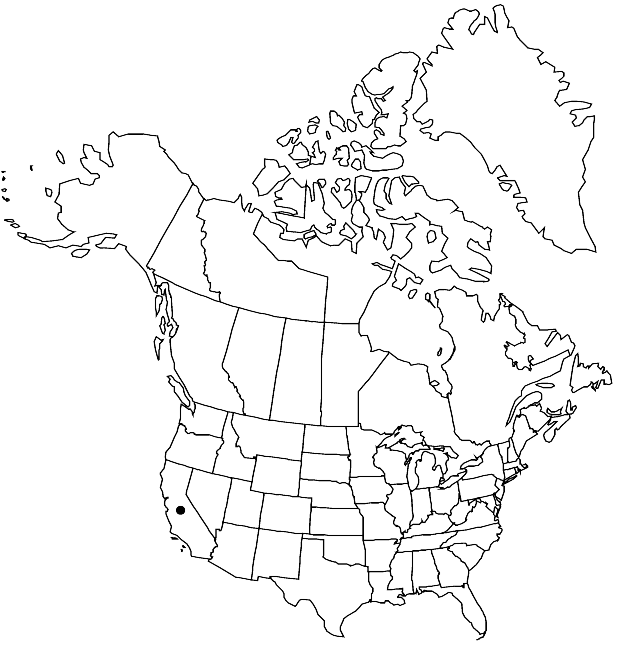Caulanthus hallii
Ann. Missouri Bot. Gard. 9: 290. 1923.
Annuals; sparsely to densely hispid or subglabrate. Stems erect or ascending, unbranched or branched distally, (hollow, sometimes slightly inflated), 2–12 dm. Basal leaves rosulate; petiole 0.5–3.5 cm; blade oblanceolate to oblong (in outline), 1.5–11.5 cm × 5–55 mm, margins pinnately lobed (lobes dentate). Cauline leaves (distalmost) sessile; blade lanceolate-linear, margins entire, (surfaces sparsely hispid). Racemes (somewhat lax), without a terminal cluster of sterile flowers. Fruiting pedicels ascending, 9–25 mm, hispid or subglabrate. Flowers: sepals erect, (creamy white), lanceolate to ovate, 3–6.5 × 1.8–2.5 mm (equal); petals creamy white, 6–10.5 mm, blade 3–4 × 1.5–2 mm, not crisped, claw narrowly oblanceolate or oblong, 3–6 × 2–3 mm; filaments in 3 unequal pairs, abaxial pair 2.5–6 mm, lateral pair 1.5–4.5, adaxial pair 4.5–8 mm; anthers narrowly oblong, unequal, 2–3 mm (adaxial pair slightly smaller). Fruits divaricate to ascending (sometimes curved), terete, 6.5–12.5 cm × 1.8–2.2 mm; valves each with prominent midvein; ovules 78–96per ovary; style to 2 mm; stigma slightly 2-lobed. Seeds 1–1.6 × 0.7–1 mm.
Phenology: Flowering Mar–May.
Habitat: Rocky areas, chaparral, scrub
Elevation: 150-1800 m
Distribution

Calif.
Discussion
Of conservation concern.
Caulanthus hallii is known from Riverside and San Diego counties.
Selected References
None.